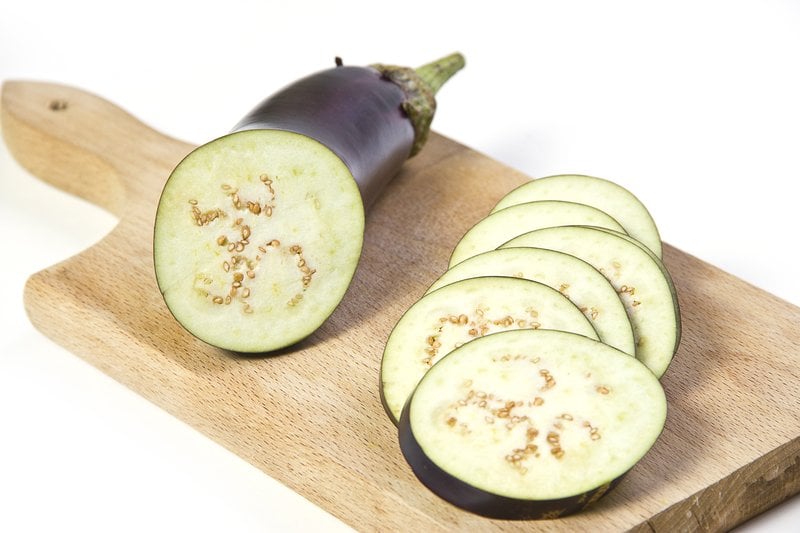12 Foods You Should Never Eat Raw

You don’t have to be a raw foodist or part of the raw-food movement to believe that certain foods can be more nutritious when they’re eaten raw. And you are right. Some examples include broccoli, cabbage, onions, and garlic. Others, however, can be more nutritious when they’re actually cooked. These include tomatoes, mushrooms, asparagus, and peppers. And still others should never be eaten raw—and the list goes beyond meats.
What is the Raw Food Movement?
Raw foodists believe that consuming foods raw improves health and well-being and can even reduce the risk of certain health conditions. So, they strive to eat at least 70% of their foods raw. (Others eat only raw foods.) This type of dietary approach can also help people lose weight, though that’s not what it’s designed to do.
The raw-food diet actually originated in the 1800s during the “Natural Hygiene Movement.” There are three main types of raw foodists: raw vegans (who consume only plant-based raw foods), raw vegetarians (who include raw eggs and unprocessed or unpasteurized dairy in their diets), and raw omnivores (who allow plant-based foods, raw eggs and dairy, as well as raw or dried meat and fish, like sushi).
Foods that fit the menu can be rather limited but do include:
- Raw and dried fruits and vegetables
- Freshly-squeezed juices
- Soaked and sprouted beans, legumes, and grains
- Raw nuts and seeds (including nut and seed butters)
- Nut and coconut milk alternatives
- Unrefined/unprocessed cold-pressed olive and coconut oil
- Sun-cured olives
- Nutritional yeast
- Seaweeds
- Raw green powders
- Fermented foods, like raw yogurts, kefir, kombucha, and sauerkraut
- Purified tap water
- Raw eggs
- Sushi, sashimi, and other raw or dried fish
- Raw or dried meats
- Non-pasteurized and non-homogenized milk or dairy products
Various methods are used to prepare foods, including soaking, dehydrating, juicing, chopping, and blending. However, the raw-food diet strictly forbids foods that are heated above 104° to 118°F and foods can only be heated with a dehydrator.
The purported benefits of eating raw foods are many as these types of foods tend to be high in nutrients and fiber. And cooking has been shown to destroy some nutrients, especially water-soluble nutrients like vitamin C and B vitamins. Raw foodists are also quick to point out that cooking can destroy, or at least alter, enzymes naturally found in foods.
In addition, because raw foods typically need to be prepared at home, the diet is low in processed foods. In other words, at least some of the benefits of a raw-food approach stem from dietary displacement (i.e., replacing less nutritious foods with more nutrient-dense foods, regardless of preparation methods). Raw foods, especially those that are plant-based, are low in calories yet high in fiber, which can make losing weight easier as these foods fill you up and keep you full for longer.
Proponents claim that sticking to raw foods preserves nutrients and enzymes, and thus leads to clearer skin, a clearer mind, increased energy levels, improved sleep, sustained weight loss, and improved blood panels. It also decreases the energy needed for cooking. Finally, raw foods have been suggested to take less of a toll on the immune system.
On the other hand, raw foodists may also not eat enough nutrients and calories, which can suppress key bodily processes like hormone synthesis and lead to decreased bone mass. Raw veganism also may not provide enough essential minerals and nutrients like calcium, iron, and protein.
And there are other drawbacks.
The Risks of Eating Raw Food
Eating foods raw can come with risks, and some foods are flatly unsafe to eat unless they’re cooked. Some foods, for example, have toxic chemicals that are broken down by the cooking process. Other foods can cause food poisoning. And other foods are just more likely to cause digestive issues (e.g., gas, bloating, and cramping) when consumed raw.
Animal products are the most likely to lead to food poisoning. These include raw (or under-cooked) meat, chicken, shellfish (including oysters), and eggs. There can also be some risk with raw (i.e., unpasteurized) milk and cheese as they can harbor harmful germs like listeria, E. coli, salmonella, and cryptosporidium, as well as other bacteria and viruses. Of course, people can also get food poisoning even when eating fresh vegetables and fruits, which is why it’s so important to clean them well before eating, especially if you won’t be cooking them.
Food poisoning often leads to fever, diarrhea (that can be bloody and lead to severe dehydration), nausea, vomiting, and abdominal pain.
12 Foods You Should Never Eat Raw
Other foods that can cause concern if not cooked include:
- Potatoes, as they can lead to bloating and other uncomfortable gastrointestinal issues. Instead, cook and then cool potatoes to benefit from their resistant starch.
- Similar to potatoes, eggplant contains solanine, which can cause tummy distress when eaten raw. For the greatest delivery of antioxidants, eggplants are best when sautéed in a bit of olive oil.
- Buckwheat greens, which can lead to sun sensitivity if eaten raw.
- Kidney beans, which contain the toxic lectin phytohemagglutinin when raw or sprouted. (Cooking kidney beans also reduces phytic acid, which is known to block absorption of some essential nutrients.) After cooking, it’s also important to fully drain the beans to remove any leftover harmful compounds.
- Lima beans, due to cyanogenic glycosides. Fortunately, these compounds become harmless once the food has been cooked for 10 to 20 minutes.
- Sprouted seeds, as they can be contaminated with salmonella, E. coli, or listeria bacteria, which can all lead to food poisoning. If you do eat sprouts, make sure they’re as fresh as possible and then wash and lightly steam them to remove any harmful bacteria.
- Bitter almonds, which again are a cyanogenic plant. They’re safe to eat once cooked or roasted. (This variety of almonds is illegal to sell in the U.S., so if you see raw almonds at your local grocery store, it’s from a different variety that is safe to consume raw.)
- Flour, which may be contaminated with pathogens like E. coli due to the critters that tend to reside around wheat fields. (This is another reason to not eat raw cookie dough, which can also contain raw eggs.)
- Elderberries, which, when cooked, have an amazing array of health and potential medicinal benefits; yet, they should definitely be avoided raw as they can cause stomach problems (including vomiting and diarrhea) and are known to be toxic as they contain cyanide-inducing glycoside. (Note, the flowers can be eaten raw or cooked.) Make sure the berries are completely cooked before consuming your syrup, elixir, jam, or pie.
- Yucca (aka cassava), a popular root vegetable in South American cuisine, which can be toxic if eaten raw as it also contains cyanogenic glycosides. Instead, it should be peeled, sliced, and cooked before being eaten, as it’s a nutritious food that’s high in vitamins and minerals.
- Green beans, which aren’t necessarily dangerous in the raw; they’re just hard on the digestive system. Instead of eating them raw, blanch them to reduce lectin levels, so they’re easier to digest.
- Rice, which is best to not eat raw, as it can harbor disease-causing bacteria.
In addition to potentially making food safer and easier to chew and digest, cooking can also bring out the tastes and flavors in foods, making them more enjoyable to eat.
While some vegetables and fruits are more nutritious raw, steaming and boiling others actually makes the vitamins and antioxidants more readily available. And cooking can make some foods safer to eat by killing toxins, bacteria, and other harmful compounds. While a raw diet can work for some, a healthy diet can be made up of a variety of both cooked and raw foods.
So, while including many raw foods (e.g., fruits and vegetables) in the diet is a great idea, it’s not necessary to eat 100% raw. What’s more, cooking some foods provides additional advantages, including improving digestion and taste.




 7 Signs Your Body is Seriously Low on Collagen (not just wrinkles)
7 Signs Your Body is Seriously Low on Collagen (not just wrinkles) Health Expert: "Turmeric Doesn't Work (unless...)"
Health Expert: "Turmeric Doesn't Work (unless...)" 3 Warning Signs Your Probiotic Supplement is a Total Waste
3 Warning Signs Your Probiotic Supplement is a Total Waste

